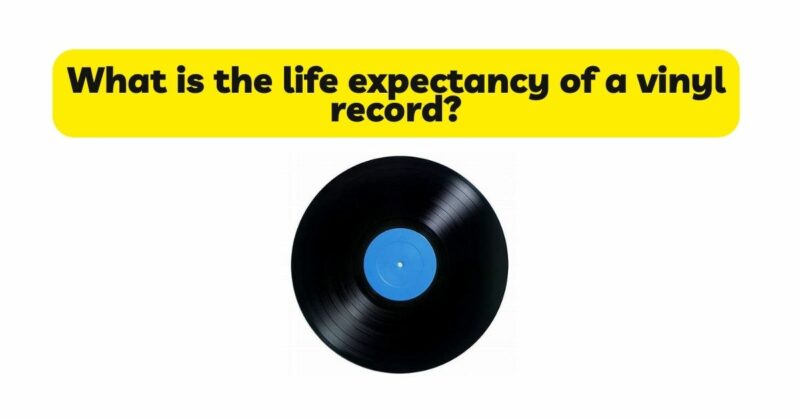Vinyl records have stood the test of time as beloved music artifacts, captivating collectors and audiophiles alike. As with any physical medium, vinyl records have a finite lifespan. Understanding the factors that contribute to vinyl’s longevity and potential deterioration is crucial for preserving cherished collections. In this article, we will delve into the lifespan of vinyl records, exploring the variables that impact their durability, storage conditions, proper handling, and maintenance. By grasping these considerations, collectors can take proactive steps to extend the life expectancy of their vinyl records.
- Vinyl Material: Vinyl records are primarily composed of polyvinyl chloride (PVC), a durable and resilient material. PVC has proven to be a reliable medium for preserving audio fidelity. Under optimal conditions, vinyl records can last for several decades, and some well-maintained records from the mid-20th century continue to provide excellent sound quality today.
- Environmental Factors: The lifespan of vinyl records can be significantly influenced by environmental conditions. Consider the following variables:
a. Temperature and Humidity: Extreme fluctuations in temperature and humidity can degrade vinyl records over time. High temperatures can cause warping, while excessive humidity can lead to mold growth or damage the record’s surface. It is crucial to store records in a cool, dry environment with stable temperature and humidity levels.
b. Sunlight Exposure: Prolonged exposure to direct sunlight can cause fading and discoloration of record covers. Ultraviolet (UV) rays can deteriorate the vinyl material, leading to brittleness or distortion. It is advisable to store records away from windows or other sources of direct sunlight.
c. Air Quality: Environmental pollutants, such as dust, smoke, or airborne chemicals, can settle on vinyl records and impact their longevity. Regular cleaning and maintenance help minimize the accumulation of debris and preserve the record’s condition.
- Storage and Handling: Proper storage and handling practices significantly contribute to the lifespan of vinyl records. Consider the following guidelines:
a. Record Sleeves: Storing records in protective sleeves is essential for preventing scratches, dust buildup, and potential damage. Acid-free paper or high-quality polyethylene or polypropylene sleeves offer optimal protection.
b. Upright Storage: Storing records vertically, rather than horizontally or stacked, helps prevent warping and reduces the risk of accidental damage. Vertical storage ensures even weight distribution and minimizes stress on the records.
c. Record Jackets and Covers: Maintaining the condition of record jackets and covers is essential for long-term preservation. Handle records with clean hands, avoid excessive force, and minimize friction during insertion and removal to prevent wear or damage to the covers.
d. Proper Cleaning: Regularly cleaning records with appropriate methods and solutions removes dust, debris, and potential contaminants that can affect playback or cause long-term damage. Gentle cleaning techniques and anti-static tools help maintain optimal sound quality.
- Frequency of Use: The lifespan of a vinyl record can be influenced by how frequently it is played. Each playback introduces wear on the record’s surface and stylus contact with the grooves. However, when records are handled and played with care, the impact on longevity is typically minimal. Proper stylus alignment, tracking force, and regular stylus maintenance contribute to minimizing wear during playback.
- Quality of Pressing and Manufacturing: The manufacturing quality of vinyl records plays a significant role in their lifespan. Records pressed from well-maintained stampers and using high-quality materials are likely to have a longer lifespan. Records pressed with attention to detail and utilizing advanced techniques tend to exhibit superior sound quality and resilience.
- Record Maintenance: Regular maintenance routines can extend the lifespan of vinyl records. Consider the following maintenance practices:
a. Cleaning: Regularly clean records using appropriate cleaning solutions, brushes, or record cleaning machines to remove dust, debris, and contaminants that accumulate over time. Proper cleaning helps reduce the risk of surface noise, degradation, and potential damage.
b. Inspection: Periodically inspect records for signs of wear, warping, or visible damage. Promptly address any issues to prevent further deterioration and to ensure the best possible sound quality.
c. Stylus Care: Maintain the stylus in good condition by regularly cleaning and aligning it. A clean and aligned stylus reduces the risk of damage to the record’s grooves and preserves sound quality.
- Expectancy and Variability: While vinyl records can last for many years, the life expectancy can vary depending on several factors. Proper storage, handling, and maintenance can prolong the lifespan. However, individual records may experience wear or damage due to mishandling, poor storage conditions, or accidents. Factors such as pressing quality, vinyl material, and environmental conditions also contribute to the variability in record lifespans.
Conclusion: Vinyl records, when properly cared for, can provide many years of enjoyment. The life expectancy of a vinyl record depends on various factors, including environmental conditions, storage practices, handling techniques, and manufacturing quality. By storing records in suitable conditions, handling them with care, and maintaining regular cleaning and maintenance routines, collectors can significantly extend their lifespan. While vinyl records are not indestructible, they possess a durability that allows them to transcend time when cherished and preserved. By implementing proactive measures, collectors can continue to savor the nostalgic pleasure and exceptional sound quality of their vinyl collections for generations to come.

